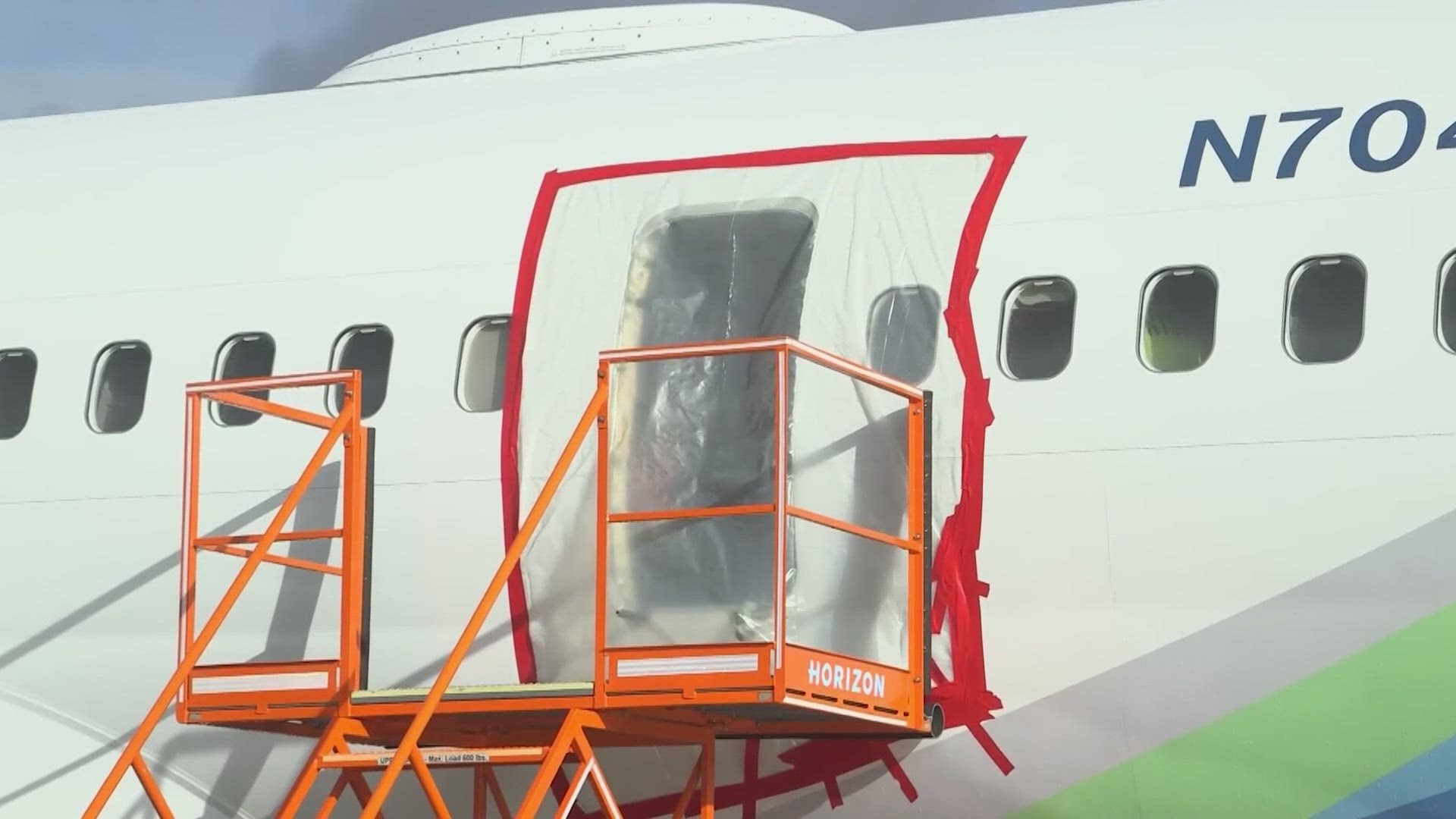RENTON, Wash. — Six passengers of Alaska Airlines flight 1282 have filed a class-action lawsuit against The Boeing Company following the airplane’s door plug loss shortly after the Boeing 737 Max 9 took off from Portland, Oregon, on Jan. 5.
Shortly after departing Portland, heading for Ontario, California, the Boeing 737 Max 9’s door plug, situated on the left side of the plane in row 26, blew off and left a gaping hole in the side of the plane.
“The aircraft depressurized, which terrified its passengers,” the lawsuit states, and “the event physically injured some passengers and emotionally traumatized most if not all aboard.”
The Stritmatter Firm, based in Seattle, represents the six passengers and the husband of another passenger named in the lawsuit. The passengers are seeking compensation for their injuries.
“This is an extremely frightening, traumatic event, and one that is really living with our clients, and probably will for quite some time,” said Daniel Laurence, a partner with the Stritmatter Firm.
Both the Federal Aviation Administration (FAA) and the National Security Transportation Board (NTSB) are investigating what caused the door plug to detach and if Boeing failed to ensure the 737 Max 9 jets were safely manufactured.
“Now we're finally Boeing is waking up to the fact that whatever it's been doing lately, whether it's respect to the max or their production methods, or lack of quality control, they need to own up to it. They need to look it straight in the eye, and they need to stop it, they need to stop it from happening,” Laurence said.
On Tuesday, Boeing CEO Dave Calhoun said the issue was "our mistake" at a company meeting at its Renton headquarters. On Thursday, Boeing declined to comment on the class-action lawsuit.
“Boeing has acknowledged its culpability here," Laurence said. "The CEO said they made a mistake. That I think is essentially a euphemism for admitting that they had a pretty serious problem of quality control, some kind, both assembly and quality control, yet we still don’t know what that problem is."
Passengers of the lawsuit include a Vancouver, Washington resident; two passengers from Long Beach, Washington; two residents from Corona, California, and the husband of a passenger from Florida.
“One of our clients said she didn't even know if the cockpit crew was alive. These are the kinds of thoughts that were going through people's heads,” Laurence said.
Passengers suffered bruises and the rapid pressure change also made some passengers' ears bleed, the lawsuit states.
“Passengers were shocked, terrorized and confused, thrust into a waking nightmare, hoping they would live long enough to walk the Earth again,” the lawsuit states.
Passengers allege that the aircraft’s oxygen masks, which dropped during the pressure change, did not function and oxygen did not flow to all passengers.
"Unfortunately, although everyone is glad that the blow-out occurred while the crew could still manage to land the aircraft safely, this nightmare experience has caused economic, physical and ongoing emotional consequences that have understandably deeply affected our clients, and is one more disturbing black mark on the troubled 737-MAX series aircraft," said Laurence.
The lawsuit states some passengers feared they would not survive the flight as it made an emergency landing back in Portland. The door plug’s loss occurred when the plane was above 10,000 feet.
“Thoughts of complete plane malfunction and possible destruction naturally entered their minds,” the lawsuit states. “Some prayed. Some texted family to express their trepidation. Some gripped and clung to one another. Some adult passengers were crying. Most were [eerily] subdued in their collective helpless state, muted with masks on.”
The lawsuit claims one passenger suffered a concussion and neck and back injuries, loss of hearing and internal bleeding in her ears as a result of the door plug loss. Other passengers had breathing difficulties, emotional distress and one passenger suffered a seizure after disembarking the plane, the lawsuit states.
The lawsuit claims The Boeing Company delivered 737 Max 9 aircrafts to Alaska Airlines without properly securing the plug to the airframe, without properly securing the bolts or seals, or with defective material.
The 63-pound door plug was found near Portland days after the incident and is set to be examined in the NTSB's laboratory.

